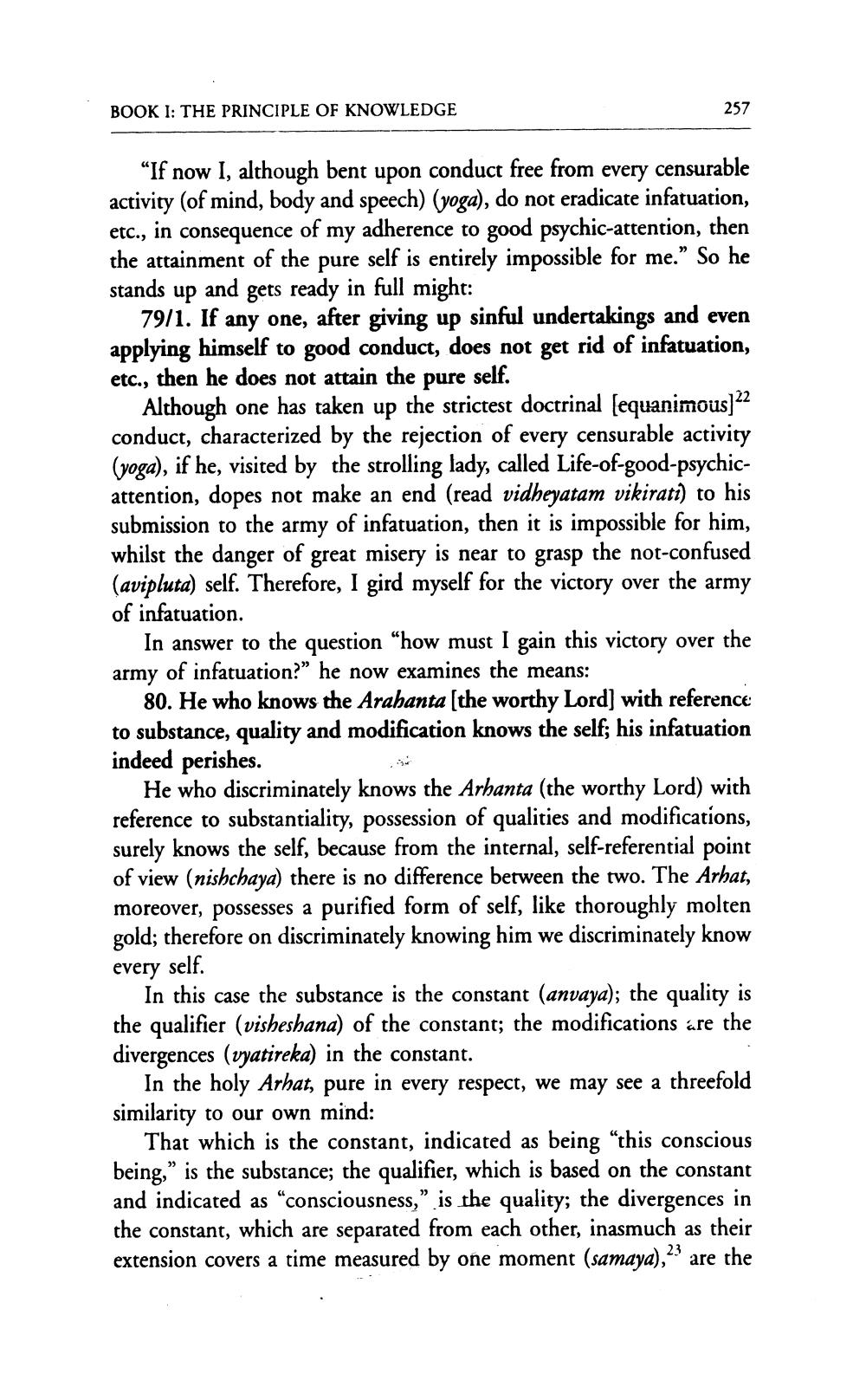________________
BOOK I: THE PRINCIPLE OF KNOWLEDGE
257
“If now I, although bent upon conduct free from every censurable activity (of mind, body and speech) (yoga), do not eradicate infatuation, etc., in consequence of my adherence to good psychic-attention, then the attainment of the pure self is entirely impossible for me.” So he stands up and gets ready in full might:
79/1. If any one, after giving up sinful undertakings and even applying himself to good conduct, does not get rid of infatuation, etc., then he does not attain the pure self.
Although one has taken up the strictest doctrinal (equanimous]22 conduct, characterized by the rejection of every censurable activity (yoga), if he, visited by the strolling lady, called Life-of-good-psychicattention, dopes not make an end (read vidheyatam vikirati) to his submission to the army of infatuation, then it is impossible for him, whilst the danger of great misery is near to grasp the not-confused (avipluta) self. Therefore, I gird myself for the victory over the army of infatuation.
In answer to the question “how must I gain this victory over the army of infatuation?” he now examines the means:
80. He who knows the Arahanta (the worthy Lord) with reference to substance, quality and modification knows the self; his infatuation indeed perishes.
He who discriminately knows the Arhanta (the worthy Lord) with reference to substantiality, possession of qualities and modifications, surely knows the self, because from the internal, self-referential point of view (nishchaya) there is no difference between the two. The Arhat, moreover, possesses a purified form of self, like thoroughly molten gold; therefore on discriminately knowing him we discriminately know every self.
In this case the substance is the constant (anvaya); the quality is the qualifier (visheshana) of the constant; the modifications are the divergences (vyatireka) in the constant.
In the holy Arhat, pure in every respect, we may see a threefold similarity to our own mind:
That which is the constant, indicated as being “this conscious being," is the substance; the qualifier, which is based on the constant and indicated as “consciousness," is the quality; the divergences in the constant, which are separated from each other, inasmuch as their extension covers a time measured by one moment (samaya), 2are the




